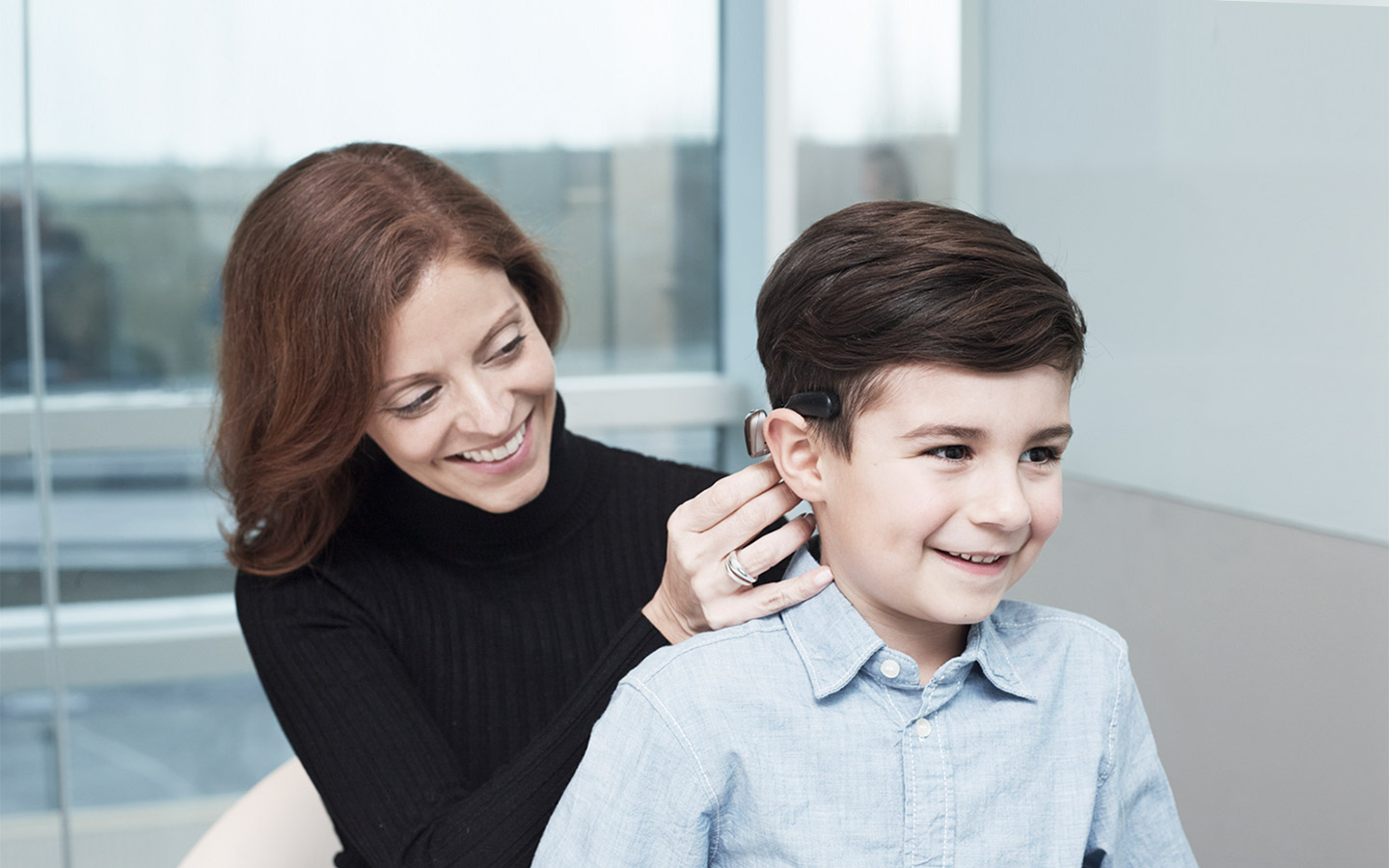Fitting your child's bone conduction device
This is an important time in your child's hearing journey. You can prepare with questions to ask their hearing health professional.

What you'll find on this page
- Questions to ask your child’s hearing health professional.
- Information about your child’s first fitting session.
- Tips for the first few months after the sound processor is turned on.
As your child's fitting day approaches, you may feel nervous and excited.
To help you prepare, we’ve compiled a list of questions to ask your child’s hearing health professional.
These questions will help you know what to expect at the first programming appointment and get everyone ready for life with a new hearing device.
Questions for parents to ask about fitting day and beyond
- What happens during the appointment?
- What does programming the sound processor feel like?
- Will my child hear right away?
- How will it sound?
- How long will it take my child to adjust to the new sound?
- How do I put on my child’s device and can they put it on themselves?
- How does it work?
- What tips do you have for using the new device?
- How often will I need to charge or change the batteries?
- How do I store and care for the device?
- What resources do you recommend for rehabilitation?
- What happens if my child’s hearing changes over time?
- Is there a network of families of bone conduction solution recipients that I can connect with?
What usually happens on fitting day?
When your child gets a bone conduction implant or a Baha Start – Cochlear’s non-surgical solution – their hearing health professional will fit and program their sound processor. It’s a simple and quick process.
Your hearing health professional will connect the sound processor to the programming software and place the sound processor on your child’s head. They’ll then perform a feedback test and your child will hear sounds through the sound processor for the first time.
Finally, your hearing health professional will programme the sound processor to meet your child’s individual needs. They can set specific listening programmes for different hearing situations, such as quiet or noisy environments.
Your child’s new hearing is live and ready to go.
"The moment we put the Baha® 5 [Sound Processor] on him (Jackson), it was magical. He smiled and looked at me as I softly spoke and said his name. My heart melted and that moment validated any questions we had about whether or not we were doing the right thing."
- Amanda, mother of Jackson, Cochlear™ Baha System recipient
What to expect after your child’s sound processor is turned on
When your child's sound processor is turned on, all the new sounds can seem a little overwhelming for them at first. It will take them some time to adjust and get used to the new sounds.
Initially, their hearing may feel different. Generally, within a few weeks of taking in all sorts of different sounds, the brain will adapt and their hearing will start to feel more natural.
Follow the guidelines for care and maintenance for your child's device.
We offer many how-to videos, and our customer service team can help answer your questions
Patience and persistence will pay off
It takes time and effort to get used to hearing with a bone conduction device. It doesn’t necessarily happen instantly.
Make sure you are committed to helping your child use the device to get used to it, and that they listen to a variety of sounds – music, noises in the environment and conversations around you.
Your child can start using the sound processor at home doing everyday things, and in their own time move on to more challenging environments like outdoors or public places.
If you child is using Baha Start, they will be able to continue using this until they’re ready to move on to a hearing implant, a more permanent and effective solution1 that may further improve their hearing.2
Talk to your hearing health professional when you and your child are ready to discuss next steps.
Disclaimer
Please seek advice from your health professional about treatments for hearing loss. Outcomes may vary, and your health professional will advise you about the factors which could affect your outcome. Always read the instructions for use. Not all products are available in all countries. Please contact your local Cochlear representative for product information.
Views expressed are those of the individual. Consult your health professional to determine if you are a candidate for Cochlear technology.
For a full list of Cochlear’s trademarks, please visit our Terms of Use page.
References
- Hol MKS, Snik AFM, Mylanus EAM, Cremers CWRJ. Long-term Results of Bone-Anchored Hearing Aid Recipients Who Had Previously Used Air-Conduction Hearing Aids. Arch Otolaryngol Head Neck Surg. 2005;131(4):321–325.
- Hol MK, Nelissen RC, Agterberg MJ, Cremers CW, Snik AF. Comparison between a new implantable transcutaneous bone conductor and percutaneous bone-conduction hearing implant. Otol Neurotol. 2013;34(6):1071‐1075.







